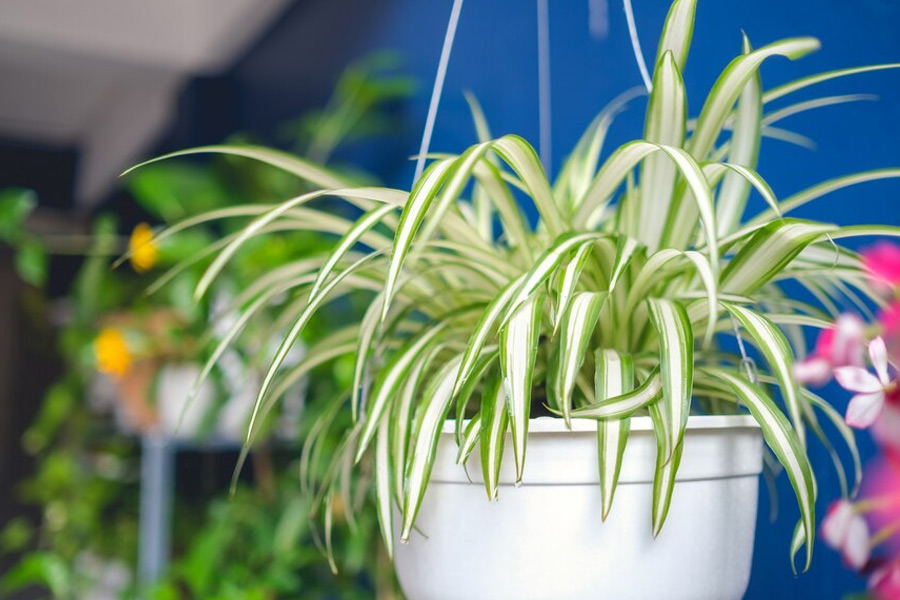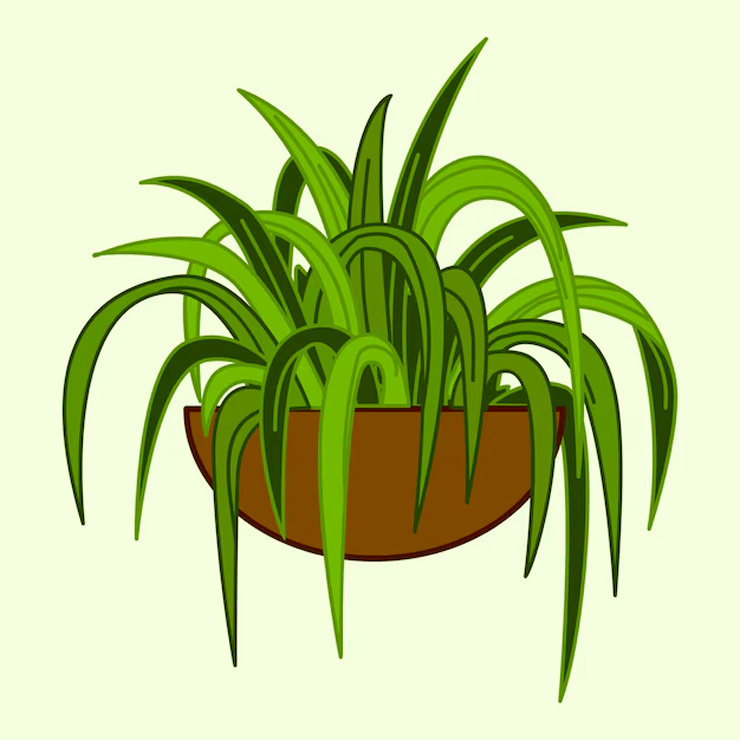-1739189263255.webp)
Caring For A Spider Plant: 5 Tips To Get A Thriving One
Despite their name, spider plants are one of the most popular and easy-to-grow houseplants. These plants grow at a moderate pace and, once mature, produce long stems with small, star-shaped flowers. If pollinated, these flowers develop into small fruits. After the flowers drop, tiny plantlets emerge in their place, eventually growing roots of their own.
These can be trimmed and potted separately to grow new plants. If you already own a spider plant and need guidance on how to care for it, you're in the right place! Below, we share essential care tips to help your spider plant thrive.
How To Take Care Of A Spider Plant?
1. Provide the Right Lighting Conditions
Spider plants flourish in bright, indirect sunlight but can also survive in low-light environments. Direct sun exposure may damage the leaves, leading to browning or fading. It is best to position them in well-lit areas with filtered light.
Best placement:
- Near windows facing north or east
- In rooms with ample but indirect sunlight
- Under artificial lighting indoors
2. Watering Guidelines: Keep It Balanced
Maintaining a proper watering routine is crucial. The soil should be slightly moist but never waterlogged, as excess moisture can cause root rot. Underwatering, on the other hand, may result in leaf dryness.
- Water when the top inch of soil feels dry
- Use distilled or rainwater to avoid fluoride damage from tap water
- Reduce watering frequency in winter, when the plant’s growth slows

Tip: Brown leaf tips may indicate sensitivity to tap water chemicals. Using filtered water can help prevent this issue.
3. Select the Right Soil and Pot
For optimal growth, spider plants require well-draining, nutrient-rich soil that allows air circulation around the roots. A mix containing peat, perlite, and compost is ideal.
- Use a light, well-draining potting mix
- Choose pots with drainage holes to prevent water accumulation
Don't Miss: 6 Reasons You Should Get A Spider Plant For Your Home
Tip: Repot the plant every one to two years or when the roots outgrow the container.
4. Maintain Ideal Temperature and Humidity
Spider plants thrive in moderate indoor humidity levels but may require additional moisture in particularly dry conditions.
Ideal temperature range: 65-75°F (18-24°C)
- Keep away from air conditioners, heaters, and cold drafts
Tip: If the leaves develop brown tips, increasing humidity through occasional misting or using a humidity tray can be beneficial.
5. Fertilising: Nourishing the Plant
Spider plants do not need frequent fertilisation, but periodic feeding helps them grow stronger.
- Apply a balanced liquid fertiliser (such as 10-10-10) once a month during the growing season (spring and summer)
- Avoid excessive fertilisation, as it can cause salt buildup and damage the leaves
Tip: Flushing the soil with plain water every few months prevents the accumulation of excess fertiliser.
6. Pruning and Propagation
- Regular trimming helps maintain the plant’s health, while propagation allows for growing new plants from existing ones. Spider plants produce small offshoots (spiderettes), which can be easily propagated.
- Trim dead or yellowing leaves with sterilised scissors
- To propagate, cut a healthy spiderette and place it in water or soil until roots develop before potting it separately
Tip: If the plant becomes too large, transplanting it into a slightly bigger pot can encourage better root development.

7. Preventing Pests and Common Problems
Although spider plants are resistant to most pests, they may occasionally attract spider mites, aphids, or mealybugs.
- Inspect the leaves frequently for signs of insects or webbing
- Wipe leaves with a damp cloth or apply a mild soap solution to remove pests
- Use neem oil as a natural remedy for pest control
Tip: Regularly cleaning the leaves prevents dust buildup and improves the plant’s ability to absorb light.
Don't Miss: 5+ Top Liquid Fertilisers For Your Plants You Can Make At Home
Keep reading Herzindagi for more such stories.
Credits: Freepik
Also watch this video
Herzindagi video